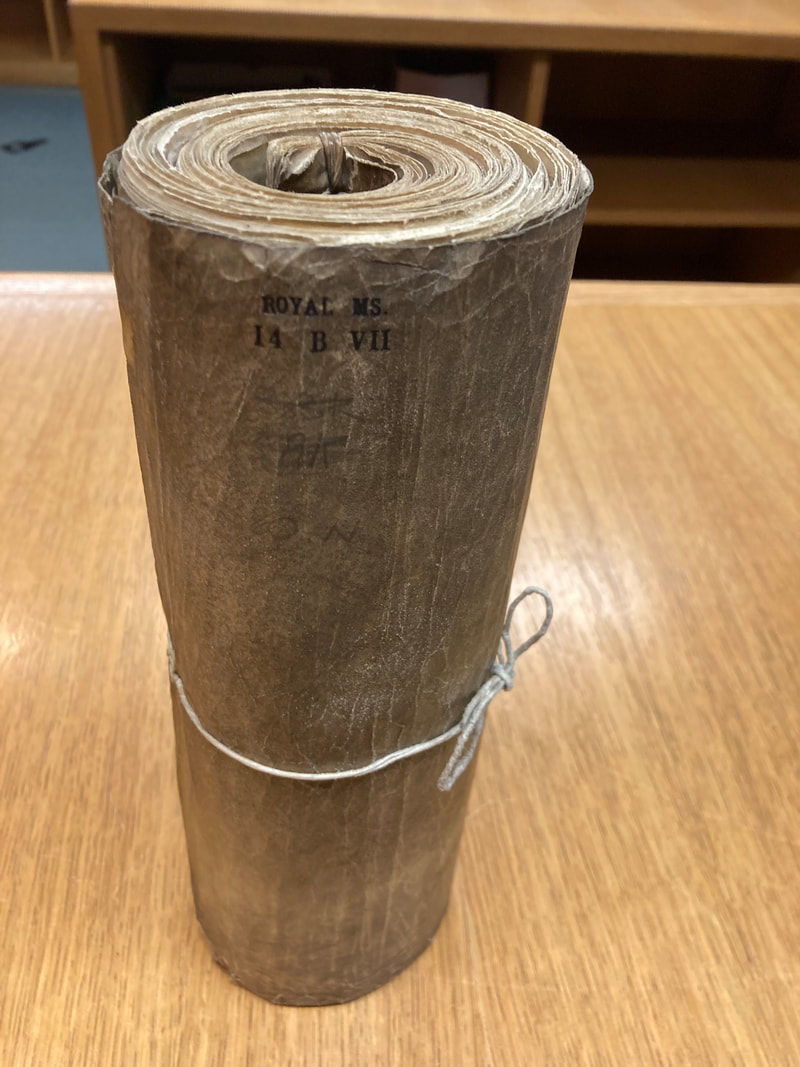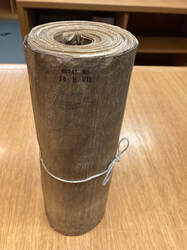|
The news today is that I am contracting with the College of Arms to see if they can find information in their archives about Sir Roger Newburgh, great grandson of John Newburgh Esq. Roger was belted on the same day in 1494 as Henry, Duke of York - aka King Henry VIII.
I believe this Roger MAY BE our link to the Devon Newburghs/Newberrys of East Lulworth. This Roger supposedly gave his brother Walter the manor of Othe Fraunces. Bartlett thought that Walter was a son of the Berkeley line. I won't go into the gory details here, but the record proves his assumption to be inaccurate.
0 Comments
Today’s post is about the difficulty of acquiring information. As I stated recently, I have located information that might be helpful in identifying the 15th century migration of the Newburghs from Dorset to what was then western Dorset - but is now part of Devon.
In an article published in 1903 in Somerset and Dorset Notes and Queries, a significant list of names was written into a record known as the Roy Roll. In the article, the Roll was said to have been archived at the British Museum. At some time during the 20th century the roll was moved to the British Library where it remains today. One would think it would be an easy task to find a person to examine the roll. What follows is the difficulty I have encountered in getting the desired information. First, the British Library experienced a cyber-attack in October of 2023, rendering the online catalogue inoperable. So instead of trying to work through the catalogue, I contacted the library staff directly and was able to get information from a librarian who generously pulled the roll and photographed it for me. I was so excited, thinking that it would be just a few short days or weeks and we would have the information needed to continue research. NOT SO FAST. . . At first, I was told that I would need to have someone local in London go to the library and search through this monumental scroll. Just looking at the photo one can see that it is a fragile 15th century parchment that would require special handling. Finding someone of that caliber is difficult. Not to mention the size of the roll would require someone with unlimited time, plus command of medieval Latin. So . . . I asked if there was a digital copy available - which I discovered there is. However, it is not available to the reading room public! Why? Good question. However, when the digitization department returns to normal operations, a copy of a microfilm (previously available) can be purchased for £18. No problem . . . but the duplication and digitization department is not expected to be back in service any sooner than July or August, if it fact it is functional even then. So . . . I asked if there was any other archive in England that might have a copy. I discovered that there is – but stringent restrictions apply there as well with regard to the microfilm, which cannot be copied and may not be used for anything other than personal research. However, once again there is a waiting period of up to eight weeks or longer as an independent researcher must be contracted to search the film. So I am back to square one waiting for the digitization department at the British Library to get back in operation, when I will try and buy a copy of the film and read it myself. In the last newsletter I wrote that Sir Roger of Devon's location had not been found. Olive Moger documented a John Newbrugh's existence in 1499 in an area adjacent to Exeter called All Hallows. Is it possible that Sir Roger was following his uncle or father into Devon? The history surrounding that area is interesting.
I am working on getting the Devon Archives to send more information about him. Onward! I have been in contact with the British Library in London in search of the Roy Roll which ultimately may reveal the names of some of the Devon people who were supporting Perkin Warbeck. As you may remember the Devon records can be somewhat scant in the late 15th century. In the last newsletter I mentioned that there were 130 Devonians who were mentioned in the scroll. They were fined for participating in the rebellion. This included the abbeys and their abbots. Unfortunately, the British Library suffered a cyber attack back in October 2023 and they have not fully recovered. One librarian took pity on me and was able to send me a photo of the scroll, which he brought out of storage. This is the original document! However, I need to find someone who can physically go to the library and search the scroll for relevant information. One bright spot is that it has been placed on microfilm and can be duplicated once the library has its technology restored. At the moment, they seem to be in a world of hurt and unable to fulfil the simplest requests for documents. Consequently, it may be some time before we can solve our Devon/Dorset mystery.
Today, I was surprised to find an interesting research paper that involved the Newburghs and many of the collateral families who inhabited Dorset, Somerset, Wilts etc. This paper gives an interesting account of the history of the family who were involved with the Yorkists.
HOWEVER, the gentleman who wrote the paper was slim on details about the various John Newburghs who were part of this family history. He did not cite original wills or IPM documents, and took his information from previous books that only guessed at the family tree. It doesn't appear that he had gone to the lengths of detailing each member named John, and he was unaware of the fact that there was more than one Roger. He also did not have wives and children appropriately named. Again, another historian has left out the Attemore's and mixed up the children. So the political history is probably the only accurate information this scholar may have chronicled correctly. None-the-less as far as it can be determined after six centuries, he may have nailed down a little more information about the family's political affiliations. The Beaufort affinity was Lancastrian, but the author mentions only the Stourton affinity. You can download the paper here. It was written as a MA dissertation by Robert Stansfield in 2002 at the University of Lancaster. https://www.academia.edu/40924213/Political_Society_in_Yorkist_England_Somerset_and_Dorset_1461_91 For many years, it was thought (by me) that the Barony of Poorstock/Powerstock was reduced by King Stephen and other lands traded, but it appears there is other information that shows the Newburghs held the Powerstock barony until around 1338. I. J. Sanders author of the book English Baronies gives a fresh perspective on the barony and what it might have meant to the Newburghs in the 14th and 15th centuries. Have a look.
English Baronies: a Study of Their Origin and Descent, 1086-1327 By Ivor John Sanders https://archive.org/details/englishbaroniess0000ivor/page/72/mode/2up I have just posted the pedigree for the Newburgh family beginning with Robert Newburgh, 3rd son of Henry Newburgh 1st earl of Warwick. Robert was seneschal of Normandy and never lived in England. His son inherited all his father's English lands and developed East Lulworth from a Saxon and Norman Crown manor on Lulla.
I believe I have isolated a case of infidelity and illegitimacy in the Newburgh family. John Newburgh Esq. has been our anchor ancestor for this time period and it appears that he was in a relationship with Alice Carent while married to Edith Attemore Newburgh.
The facts are that John Newburgh Esq. (b. 7 July 1402) was first married in April 1422 to Edith Attemore. She died c. 1448. They had three sons who are detailed in the 1449 Feet of Fines – as John Jr., Robert, and Thomas. (Feet of Fines Vol. 10, 370-71) When Edith died the Esquire quickly remarried Alice Carent Westbury (a widow) in 1448/9. This was also mentioned in the Feet of Fines pages. The Esquire supposedly sired a son William with Alice. However, he was TOO OLD to have been born after their 1448/9 marriage. Alice’s first husband John Westbury also died in 1448. An interesting sidebar to Alice’s Westbury marriage may or may not be relevant: Alice and JOHN WESTBURY purportedly had a young son also named William who died under illegal wardship with his uncle, Nicholas Carent, Dean of Wells Cathedral, on the eve of St. James the Apostle, 24 July 1453. This young William died AFTER Alice’s marriage to John Newburgh. The older William (the Esquire’s son) was killed in May of 1471 (Tewkesbury). At the time, William had four sons. Just four months after William's death the Esquire transferred his East Lulworth legacy by charter to William’s heirs, bypassing his first wife’s sons - John Jr., Robert, and Thomas. The eldest of William’s sons was John Newburgh Senior who was 27 years of age at his grandfather’s death in 1483. Which would make his birth abt. 1456. Consequently, his father WILLIAM must have been born c. 1431 or later, which was the period in which the Esquire was still married to his first wife Edith. I have verified this theory via the work of author Helen Matthews, titled The Legitimacy of Bastards. Matthews' study lays out the formulaic property laws that governed the transfer of wealth in the late 14th and 15th centuries via feoffees (enfeoffment to uses). It was not uncommon for illegitimate sons to take precedence over legitimate heirs. Matthews' work is a a must read to understanding the evolving property law in the Middle Ages. I recommend this highly readable book for anyone trying to understand English property law. Another interesting point was how many of the Beaumont people are mentioned in this book. Something that I didn't know was King William II married Isabel, widow of Robert de Beaumont/Newburgh Count of Meulan and Earl of Leicester! Many other family names collateral to the Newburghs are mentioned in this book. When I think about the Esquire's withdrawal of his 'right heirs' primogeniture during the 15th century, I wonder how the line would have turned out, and if Lulworth would have been preserved under their continued chamberlainship. Until next time . . . It has been over a thousand years since a member of the Beaumont family changed his name to Newburgh AND almost as long since the East Lulworth tract came into possession of Robert de Newburgh Seneschal and Justice of Normandy under William the Conqueror.
I would like to invite you on a journey through time and discuss the history of Dorset and the many families who surrounded the Newburgh family from 1088 until 1630. My current objective is to identify the families who migrated away from Lulworth to Stockland in the 16th century. |
Sue SimonichI am a medieval historian who has been studying the Newburgh family of Dorset for 20+ years. Archives
May 2024
Categories |



 RSS Feed
RSS Feed